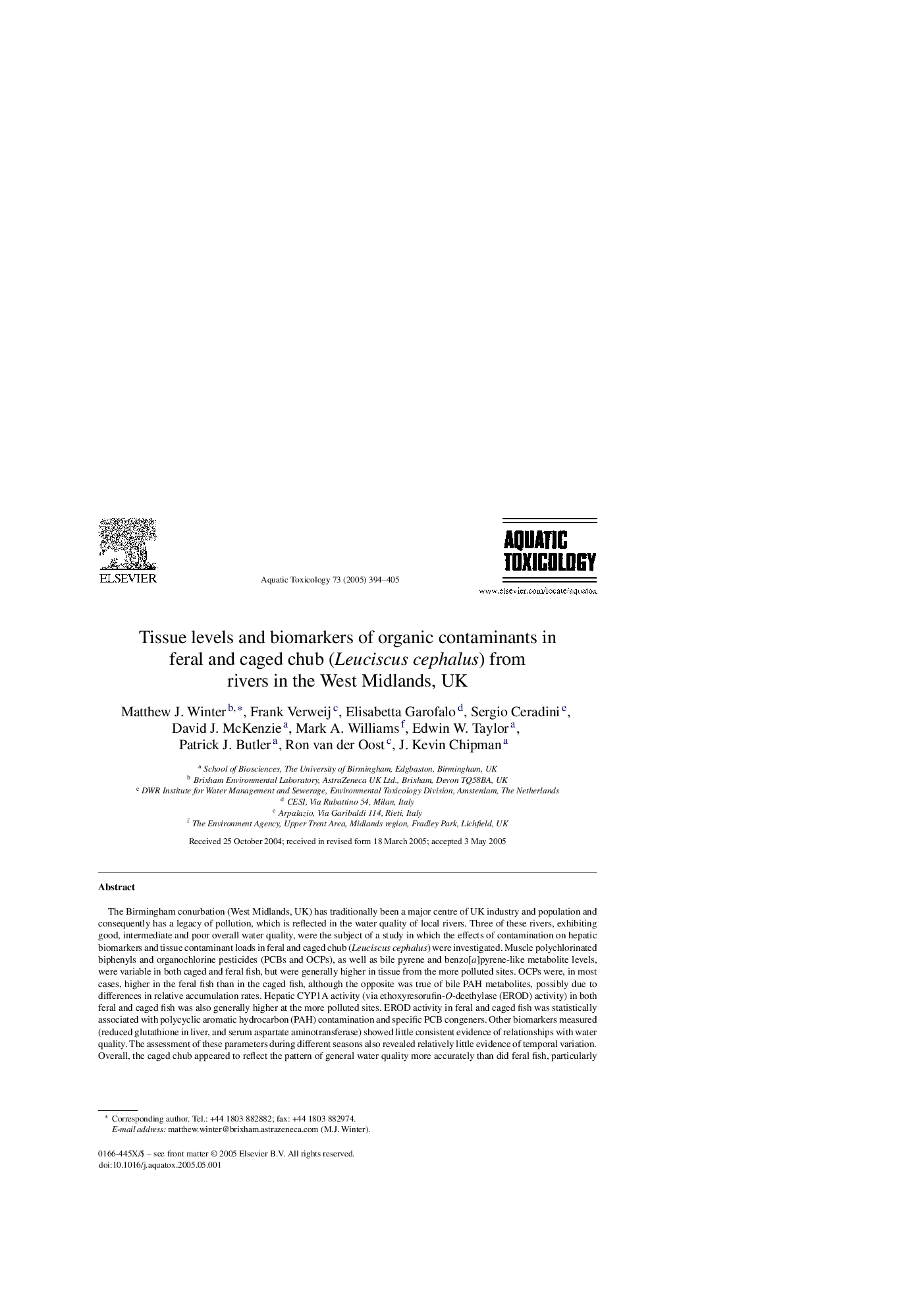| Article ID | Journal | Published Year | Pages | File Type |
|---|---|---|---|---|
| 9478250 | Aquatic Toxicology | 2005 | 12 Pages |
Abstract
The Birmingham conurbation (West Midlands, UK) has traditionally been a major centre of UK industry and population and consequently has a legacy of pollution, which is reflected in the water quality of local rivers. Three of these rivers, exhibiting good, intermediate and poor overall water quality, were the subject of a study in which the effects of contamination on hepatic biomarkers and tissue contaminant loads in feral and caged chub (Leuciscus cephalus) were investigated. Muscle polychlorinated biphenyls and organochlorine pesticides (PCBs and OCPs), as well as bile pyrene and benzo[a]pyrene-like metabolite levels, were variable in both caged and feral fish, but were generally higher in tissue from the more polluted sites. OCPs were, in most cases, higher in the feral fish than in the caged fish, although the opposite was true of bile PAH metabolites, possibly due to differences in relative accumulation rates. Hepatic CYP1A activity (via ethoxyresorufin-O-deethylase (EROD) activity) in both feral and caged fish was also generally higher at the more polluted sites. EROD activity in feral and caged fish was statistically associated with polycyclic aromatic hydrocarbon (PAH) contamination and specific PCB congeners. Other biomarkers measured (reduced glutathione in liver, and serum aspartate aminotransferase) showed little consistent evidence of relationships with water quality. The assessment of these parameters during different seasons also revealed relatively little evidence of temporal variation. Overall, the caged chub appeared to reflect the pattern of general water quality more accurately than did feral fish, particularly with respect to EROD activity and to some degree bile PAH metabolites, thus supporting their use as sentinel species. However, the fact that muscle OCPs were generally higher in the feral fish suggests that the use of feral fish may be more indicative of exposure to certain classes of contaminant, and so biological monitoring programs should be designed with such considerations in mind.
Related Topics
Life Sciences
Agricultural and Biological Sciences
Aquatic Science
Authors
Matthew J. Winter, Frank Verweij, Elisabetta Garofalo, Sergio Ceradini, David J. McKenzie, Mark A. Williams, Edwin W. Taylor, Patrick J. Butler, Ron van der Oost, J. Kevin Chipman,
